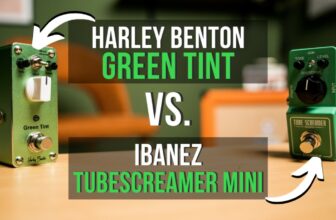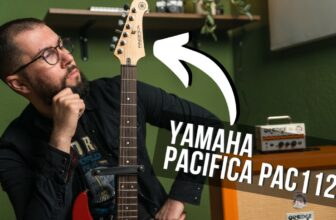The Differences Between Lap Steel Guitar and Dobro
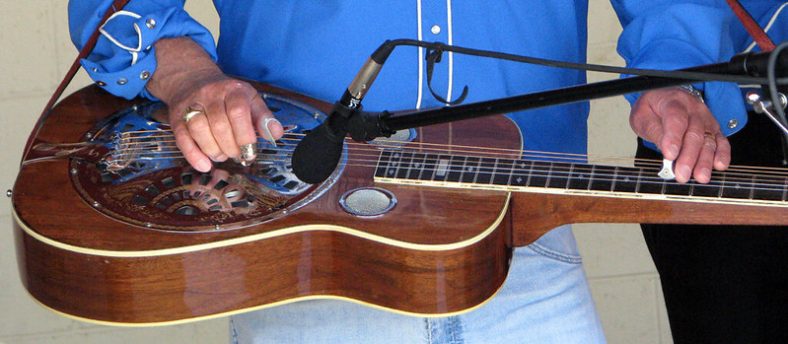
If you are getting into the world of steel guitars, there’s no doubt that there are a lot of questions that come to your mind. The differences between lap steel guitars and dobros are often a cause of confusion.
Although played in a similar way, these two are actually different instruments in several ways. In this article, we will try to explain some of the main differences, both sound and design-wise.
Also, we will try to give you a couple of tips about the way these guitars are played, in order to make your learning process easier.
Contents
At a Glance
- Both instruments have a very similar play style, setup, and have open chord tunings.
- A dobro guitar is an acoustic instrument whereas a lap steel guitar can be amplified and used with various effects pedals.
- A dobro guitar requires a bit more physical effort since its an acoustic instrument, as opposed to the amplified lap steel guitar.
- Notable Dobro Guitar manufacturers: Dobro, Dean, Gretsch, Rogue, Pyle.
- Notable Lap Steel Guitar manufacturers: Fender, Gretsch, Vorson, Rogue.
What is a Lap Steel Guitar?
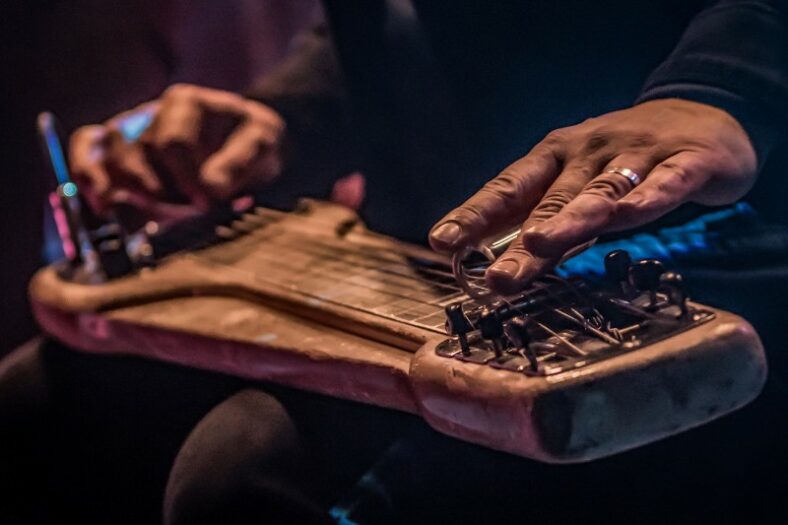
Although some sources suggest that lap steel guitars appeared in the 19th century (also known as Hawaiian guitar), the design that is present today has been around since the 1920s and 1930s.
At the time, guitar players in orchestras struggled to deal with all that noise that comes from drums and brass instruments, so the point was to make this instrument louder. Therefore, electrification seemed like a logical solution, and although we can talk about both acoustic and electric types, most people think of electrified ones when talking about lap steel guitars. Simply, acoustic lap steel guitars aren’t used these days very much.
The main characteristic of these guitars is that they are played horizontally on the performer’s lap, as the name says. The main difference compared to a common guitar is in the way of playing.
While a typical guitar is played with fingertips, which press strings against frets, these guitars are played with a metal or glass bar that is pressed against the strings. Such a way of playing causes a recognizable “slide” guitar sound when changing the pitch, and that is the main sound characteristic of both lap steel guitar and Dobro.
What is a Dobro Guitar?
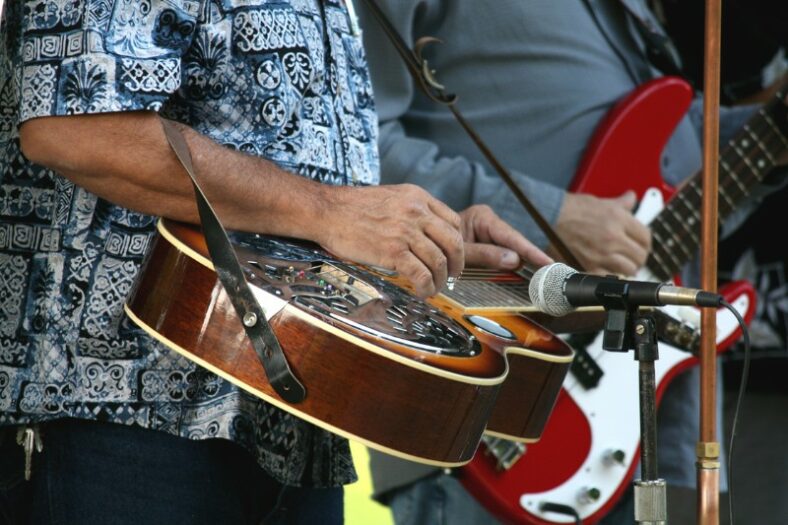
A Dobro guitar is actually a common name for a type of instrument called a resonator or resophonic guitar. Owned by Gibson Guitars, the Dobro brand was one of the first manufacturers that came up with this design and definitely the one that popularized this type of guitar.
Originally, these guitars weren’t strictly played with a slide bar in a lap position. The original intention was also to make a louder guitar, and that’s the reason why Dobro guitars came with a design that provides a highly distinctive tone.
The secret of resonator guitars’ tone is in the design. Unlike typical acoustic guitar, this one doesn’t have a hole in the middle of the top. Instead, the sound is produced by string vibrations that are conducted through the bridge to one or more metal-spun cones.
This resulted in an extremely distinctive sound, which wasn’t the most appropriate to many music genres. So, once the amplification issues were solved, resonator guitars were suppressed by electric guitars.
However, some guitar players realized the potential of this “metallic” sound and started to play it with a slide. That shaped a completely new sound, which became typical for blues and similar genres. Soon after, this guitar became popular once again, and many guitar players started to play it in the way they play steel guitars, on the lap.
What are the similarities?
As you can see, there are many similarities between these two lap guitar types. Of course, the first one that comes to mind is the way of playing. Both instruments are played on the performer’s lap, with a slide bar. Furthermore, this also means that two guitar types are characterized by a similar setup, which in practice means a pretty high string action, for the best possible sustain and tonal characteristics in general.
As Dobro and lap steel guitars are usually played by the same group of musicians, another common thing is that these two instruments use the same kinds of tunings. Instead of standard guitar tunings, such as E–A–D–G–B–E, these guitars are rather tuned to sound like open chords.
In most cases, those are the 6th, 7th, and 9th chords, as they are the most common in popular music. Among blues and rock players, the most popular tunings are open G/open A and open D/open E.
What are the differences?
Of course, there are some notable differences between the lap steel guitar and Dobro as well. The first thing that comes to mind is the fact that the lap steel guitar is plugged. In practice, this means more possibilities when it comes to tone manipulation and volume.
We can look at the differences between these two in the same way we look at the differences between acoustic and electric guitars. A Dobro would be on the “acoustic” side, so many more things, especially when it comes to volume, depending on your fingers.
As it is plugged, a lap steel guitar has a more direct, clean tone, which is important when playing in a band, where you have to cut through a mix. On one side, a Dobro requires more physical effort and also delivers a more distinctive sound.
On the other, a lap steel guitar offers better versatility. As it is plugged into an amp, you can also plug it with all kinds of effect pedals to get more interesting sounds.
We’ve already mentioned that the playing technique is pretty much the same. However, there are some fine differences that have been practiced among skilled musicians. This refers to the right hand (or left if you’re lefthanded), to the picking technique.
In both cases, we use the thumb, point, and middle finger. As we already mentioned, a Dobro requires a little bit more physical effort, so musicians prefer fingerpicks. A lap steel guitar may cause too harsh a sound, especially if you are a heavy picker.
Therefore, it may be better to use a fingerpick only on the thumb but not on the point and middle fingers. In that way, you will also have more options in terms of dynamics.
This transition from one to another method may be tricky at the beginning, but you’ll get used to it pretty quickly.
Most popular manufacturers
As you can see, there are various differences and similarities between these two types of instruments. Another common thing is that neither Dobro nor lap steel guitars are hugely popular. Therefore, the offer of these instruments definitely isn’t on the level of acoustic or electric guitars.
Still, there are numerous quality manufacturers around, and the offer of their models is pretty decent as well. In both cases, there are a number of manufacturers that specialize in these kinds of instruments, but there are also numerous products that are part of the offer of major guitar companies.
When it comes to Dobro or resonator guitars, the offer is pretty good, and many of these products come from renowned guitar makers, so you can be sure that the quality is good. Of course, the first brand that comes to mind is Dobro. Still, there are also many great models from brands like Dean, Gretsch, Rogue, Pyle, etc.
When it comes to lap steel guitars, the offer is pretty big and includes products from major guitar companies like Fender and Gretsch. Also, there are some companies that aren’t that famous in the guitar world but still make great-sounding instruments. Some of the brands that come to mind are Vorson, Rogue, SX, Asher Guitars, etc.
Conclusion
In conclusion, understanding the differences between lap steel guitars and Dobro guitars is essential for anyone venturing into the world of steel guitars. While both instruments share similarities in their lap-style playing technique and non-standard tunings, they also possess distinct characteristics that set them apart.
Featured Image: “Dobro” (CC BY 2.0) by lothlaurien



